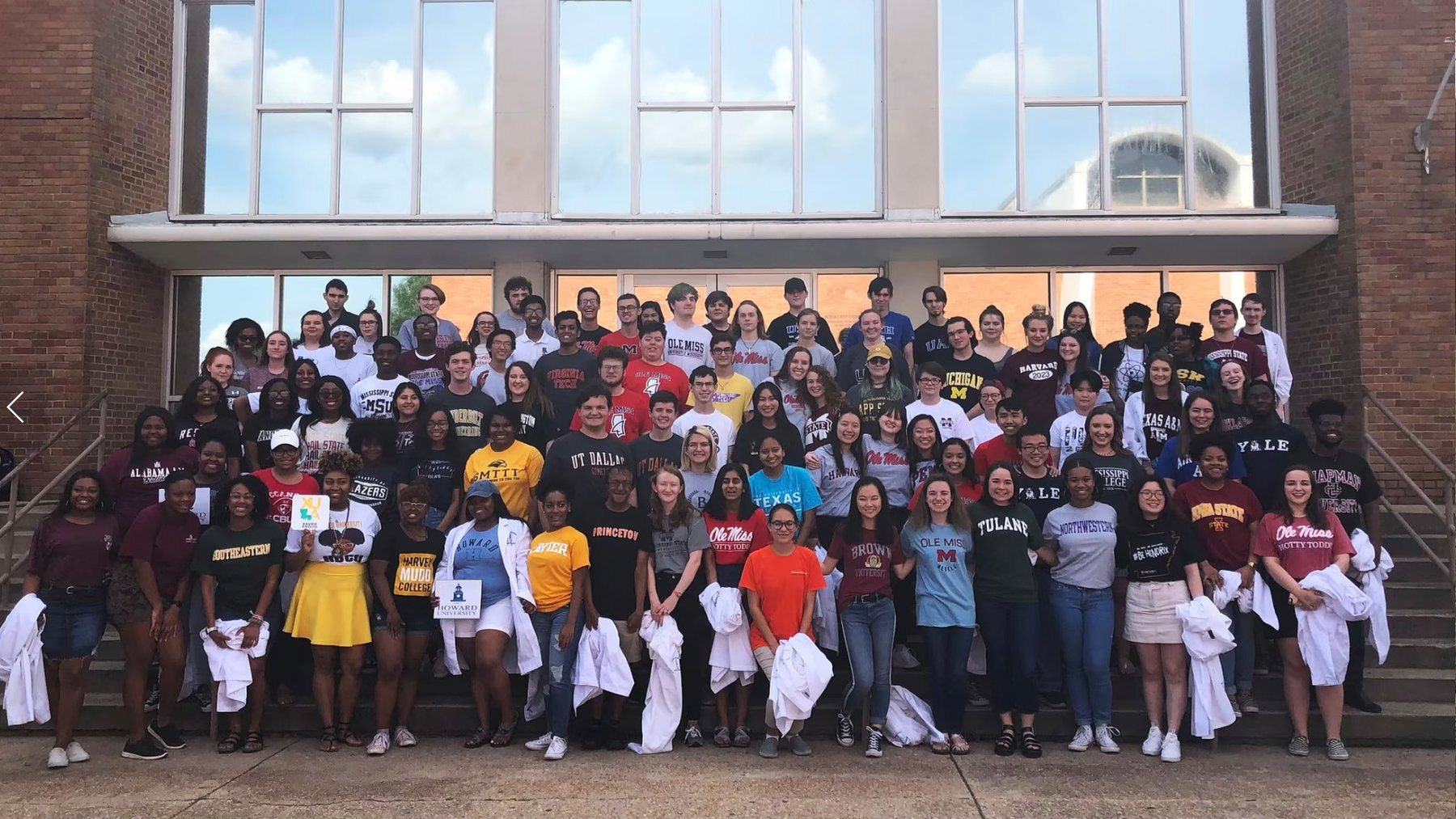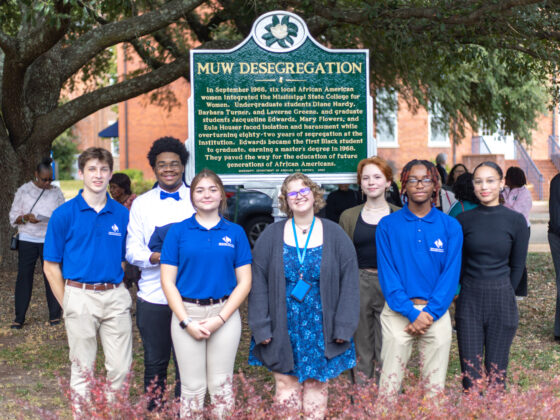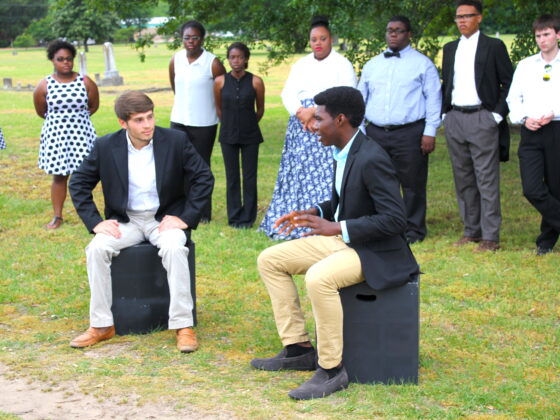Last week I wrote about what Jim and I had seen on another visit to the (exceptional) Mississippi School for Mathematics and Science (MSMS), a public, residential two-year school for juniors and seniors. We’ve been reporting on the school over the past five years. In the latest dispatch, I described the way a committed English teacher at MSMS, Thomas Easterling, was “teaching students to think” through a rigorous analysis of the novel Dirty Work, by the renowned Mississippi writer Larry Brown.
In response, Paul J. Camp, a physics professor at Georgia Gwinnett College, writes to challenge the idea that a school like MSMS—a public high school, but one that chooses its students from around the state—can meaningfully claim to be “teaching them to think.” (And, to be clear, this was my claim—not MSMS’s.)
Here are selections from Paul Camp’s long letter, followed by Thomas Easterling’s shorter response.
Paul Camp writes:
I thought you and your observations of this school were interesting, but it is a bit of a stretch to say that it demonstrates “how to teach students to think.”
I’ve contended for years that a large part of the success of private schools and magnet schools lies in the ability to cherry pick their students. [DF note: As you’ll see below, Thomas Easterling challenges the “cherry pick” characterization.] They arrive already able to think, and the function of the school is less to teach a new skill than it is to refine a preexisting skill.
When I was a research scientist at Georgia Tech, I worked in a cognitive science program that was involved in middle school science education. We were in both affluent suburban schools and poor urban ones. The suburban students were ready to go and had teachers knowledgeable enough in physics to be able to help them focus on the right phenomena.
The urban schools had teachers teaching out of subject area—a biologist and a reading teacher in a physical science class. Their content understanding was little beyond that of their students.
Nevertheless, the project based curriculum we developed was able to engage those children as well, and to at least improve their ability to design and conduct controlled variable experiments. We had kids fresh out of juvenile detention who were engaged in the projects. I’ll never forget one little girl who, in an interview, remarked: “It’s the first thing I ever made that worked.” That tells me a few things about her. She’s tried to make things to solve problems in her life in the past, which means she has the interests of an engineer. And what she finds valuable about the experience we provided is the design process that enables creating a thing that actually solves a problem.
My wife is retiring this month from teaching in Title 1 schools for over a decade. These are schools that have a >70% mobility rate. Their families move from one apartment move-in special to another. They have no stability in their lives, no permanent circle of friends, no community resources for enrichment activities. They have a disturbingly high incidence of developmental and behavioral disorders. One kid on the autism spectrum insists on talking to his friends all through class. Another sits with his head in the closet. A kindergartner didn’t even know her own name ….
And yet, you still find exceptional kids here. I do career day there every year, and I’ve also done some things with their talented and gifted classes. I remember doing an optics activity with them that was supposed to begin with them doing some informal observations using various types of lenses. Everyone except her just spent the time goofing off. She actually had a good observation of an image changing from upside down to right side up as she moved the lens closer to an object. When she tried to explain it to the rest of the class, they ignored her. That child has a nascent “ability to think” but I question if it is going to be able to develop in that environment.
At Georgia Tech, we found that loose and open ended activities only work with high SES students who have teachers that understand the target content… For lower SES schools, we found the need for a highly structured, predictable cycle of activities that reflected the actual professional practices of scientists and engineers.
The first group kind of knows how things are supposed to proceed, similar to the MSMS students. The second needs a more explicit road map to help them understand how what they are currently doing fits into an overall strategy and what should come next….
I once interviewed at the Maine School for Math and Science which I venture to guess is similar to, if not above, the Mississippi school. Those kids were the equivalent of upper division college students. Calculus well beyond the introductory level was in their rear view mirror. They were writing Python programs to simulate problems in quantum theory.
But their classes were essentially self directed. There was little to no overt instruction unless they ran into a problem. They knew what they were doing and where it should go next. They already knew how to think.
I ended up, for family reasons, taking a position at Georgia Gwinnett College. This is a very different population. The mission of the college is to expand the pool of students capable of succeeding in college.
My physics courses are usually majority minority, first generation college students, many first generation Americans, juggling jobs and family responsibilities with academic needs. They are, by and large, disciplined and intent on succeeding, but the open approach of the Maine school just would not work for them. I know. I tried it.
Though they have the requisite discipline, they do not have the requisite cognitive abilities to systematically seek out information relevant to their goals, sort through good from bad information, and use it to achieve a personally meaningful goal.
In other words, they do NOT know how to think, at least not how to think like a physicist. Which brings me back around to the idea of contrastive sets.
Some students will succeed no matter what environment you put them in.These students are the bread and butter of institutions like Georgia Tech and MIT, and they come from places like these magnet schools…. Looking at what you can do with that caliber of student leads to lessons that simply do not transfer to a more general population.
If your goal is to figure out how to teach students to think, it would be quite a bit more instructive to pair this school with a more mainstream school and one that serves an underprivileged population. That enables you to identify practices that are unique to the cherry picked population they are able to work with, and what practices actually do lead to an improved ability to think, however you define that, with more normal students. In fact, what would be really interesting would be to go to the elementary and middle schools that the MSMS students come from and see what went on there that allowed them to become what they are…
OK, I’m long winded. The TLDR version is: you’ve got some very nice observations of what happens at schools like MSMS, but you don’t really know what those observations mean if you only look at schools that serve a cognitively elite population. I guess I should have put that at the top. 😎
Now, here is Thomas Easterling’s reply:
First, I’d like to thank Paul Camp and his wife for teaching students who get sent to the ranks of the forgotten all too often—bright students whose familial circumstances eat away at them until we see their problems instead of their potential.
Some MSMS students fall into that category as well: “cognitively elite” students who are underserved by their current schools. Between 20% and 25% of our students have qualified for fee waivers since the Mississippi legislature required us to start charging for room and board. About 35% of our accepted applicants classify themselves as belonging to a minority.
Regardless of income or ethnicity, MSMS works hard to empower students to make their dreams come true. Some of the ways we do that can be measured: about 10% of our seniors quality as National Merit Finalists; ACT composite scores have gone up 4.7 points from admission to graduation since 2012; roughly 60% of our graduates earn at least a 30 on the ACT, though only 20% enter with such a score. Data shows that our students grow as thinkers once they arrive on campus.
Of course, we also have anecdotal evidence that our classes teach students how to think. This is particularly true in the arts and humanities.
However cognitively elite a teenager might be, that student won’t necessarily read critically or write well without instruction and practice. (One of our MIT-bound seniors recently told me that my English class was the hardest he had taken here. How do you give a correct answer in a class where being right isn’t enough—you’ve also got to convince others that you’re right? he asked.)
In fact, one could plausibly argue that the greatest benefits to attending MSMS involve exchanging ideas with people from every walk of life in Mississippi. From programming robots to learning about paradigm shifts, our students take what we do in the classroom to their residence halls and then to the wider world.
We proudly describe ourselves as the most diverse city block in the state of Mississippi. Our students come from every walk of life: Asians whose parents came to America with little money and less English; solidly middle-class soccer players; kids who qualify for free and reduced meals; trust-fund babies; African Americans; whites; Hispanics; straight; gay; Democrat; Republican; blissfully undecided. All of them receive the same opportunity for excellence at our school.
Thomas G. Easterling III
English Teacher
The Mississippi School for Mathematics and Science
Columbus, Mississippi 39701




